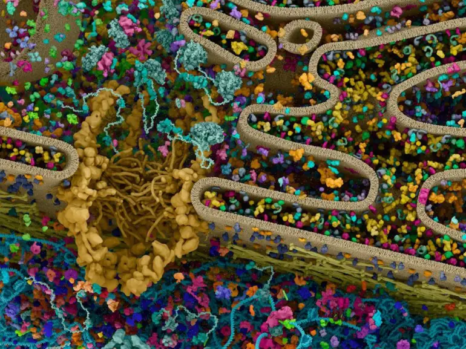
(Español)
¿ES CORRECTA LA IDEA DE PASTEUR DE LA ASÍ LLAMADA «LEY DE LA BIOGÉNESIS» QUE REZA QUE «TODA VIDA SALE DE VIDA», A LA QUE SE AGARRAN LOS CREACIONISTAS?: NO
«Esta idea, muy popular durante un tiempo, surge como conclusión final de la demostración de que no existía la generación espontánea en la que se creía desde que Aristóteles la había formulado (¡el viejo Aristóteles!, ¡tan falto el pobre de medios –de microscopios en este caso– y sin embargo tan sobrado de ideas interesantes pero no contrastadas!). Pasteur demostró mediante el microscopio que existían pequeñas vidas, «micro-bios», pequeños seres vivos que eran los que se encargaban de generar la descomposición de los cadáveres, y otras muchas cosas que se sospechaban pero que no habían podido demostrarse hasta que no pudimos alcanzar, gracias a la ciencia, esa fase tecnológica.
Dicho esto, no es menos cierto que esa frase de cabecera, «toda vida sale de vida», no debería haber sido así formulada por la imaginería popular –Pasteur y sus colegas sabían de sobra que a lo que querían referirse no era exactamente lo que esa inadecuadamente célebre frase decía como supuesto resumen–, pero entonces, en aquella época, se pensaba en la semblanza general que efectivamente la vida provenía siempre de la vida y por eso nadie puso reparos a lo evidentemente inadecuado de su contenido.
Tiempo más tarde, cuando la ciencia continuando en la colaboración del desarrollo de la tecnología se dispuso a sí misma de mejores medios aún para estudiar la materia, se estableció que la unidad de la vida era la célula (de céldula*>céllula*>célula, «pequeña celda», en latín). Eso quiere decir que según los requerimientos científico-filosóficos de aquel momento para definir lo que está vivo, es decir, que nace, crece y se reproduce –actualmente los requerimientos son ligeramente distintos y perfilados de otros modos–, lo primero de lo que podía afirmarse que lo estaba era la célula.
Sin embargo, a poco que lo pensemos, esto implica inmediatamente que la célula es algo vivo compuesto por cosas que no están vivas, ya que la célula tiene partes internas y funcionales que la constituyen (véase en la clásica imagen adjunta). Hoy día a nadie le cabe duda de esto –o no debiera caberle, por la obviedad– porque además sabemos que la materia está formada por lo que hoy llamamos átomos y partículas subatómicas que tampoco están vivos.
Todo esto quiere decir que cuando se da la suficiente complejidad funcional de combinación de sistemas a partir de los materiales básicos e inertes de la realidad –combinatoria restringida por la forma que aporta el número–, la vida aparece como lo que llamamos un fenómeno emergente, es decir, un fenómeno cuyas características sólo aparecen como propiedad del sistema y cuyas partes del propio sistema constituyente no lo poseen. Así pues, «la vida siempre proviene de la no-vida».
Hasta donde sabemos 😉 »
[Agustín Barahona]
(English)
IS PASTEUR’S IDEA OF THE SO-CALLED «LAW OF BIOGENESIS» WHICH STATES THAT «ALL LIFE COMES FROM LIFE», TO WHICH CREATIONISTS Cling, CORRECT?: NO
«This idea, very popular for a time, arises as a final conclusion from the demonstration that there was no such thing as spontaneous generation, which had been believed in since Aristotle had formulated it (old Aristotle! The poor man was so lacking in means – -of microscopes in this case– and yet so many interesting but unproven ideas!). Pasteur demonstrated through the microscope that there were small lives, «micro-bes», small living beings that were responsible for generating the decomposition of corpses, and many other things that were suspected but that had not been able to be demonstrated until we could reach, thanks to science, that technological phase.
That said, it is no less true that that leading phrase, «all life comes out of life,» should not have been formulated in this way by popular imagery — Pasteur and his colleagues knew very well that what they wanted to refer to was not exactly what that that inappropriately famous phrase said as a supposed summary–, but then, at that time, it was thought in general that life actually always came from life and that is why no one objected to the evident inadequacy of its content.
Some time later, when science, continuing to collaborate in the development of technology, provided itself with even better means to study matter, it was established that the unit of life was the cell (cell>cell>cell , «small cell», in Latin). This means that according to the scientific-philosophical requirements of that moment to define what is alive, that is, what is born, grows and reproduces – currently the requirements are slightly different and outlined in other ways -, the first of the that could be said to be was the cell.
However, if we think about it, this immediately implies that the cell is something living made up of things that are not living, since the cell has internal and functional parts that constitute it (see the classic attached image). Today no one has any doubt about this – or should not, because it is obvious – because we also know that matter is made up of what we today call atoms and subatomic particles that are not alive either.
All this means that when there is sufficient functional complexity of combination of systems from the basic and inert materials of reality – combinatorics restricted by the form provided by number – life appears as what we call a phenomenon. emergent, that is, a phenomenon whose characteristics only appear as a property of the system and whose parts of the constituent system itself do not possess it. Thus, “life always comes from non-life.”
As far as we know 😉 «
[Agustín Barahona]